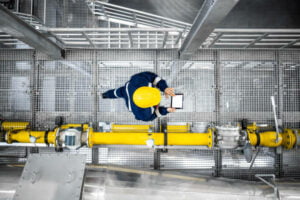When it comes to hazardous gases and vapors, safety is paramount. This is where Intrinsically Safe Store comes in. As a leading provider of intrinsically safe products, we are committed to helping businesses manage hazardous gases and vapors effectively. In this article, we will delve into the different classifications of hazardous gases and vapors and explore the best management practices for each. So, let’s get started and remember, if you need any assistance, don’t hesitate to contact us.
Understanding Hazardous Gases and Vapors
Hazardous gases and vapors pose significant risks to health, safety, and the environment. They can cause fires, explosions, and toxic exposures, leading to severe injuries or even fatalities. According to the Bureau of Labor Statistics, exposure to harmful substances or environments accounted for 3% of all workplace fatalities in 2019.
Classifications of Hazardous Gases and Vapors
Hazardous gases and vapors are classified based on their physical and chemical properties. The three main classifications are:
- Flammable or explosive gases
- Toxic gases
- Oxygen-deficient or oxygen-enriched environments
Management Practices for Flammable or Explosive Gases
Flammable or explosive gases can ignite and cause devastating fires or explosions. To manage these gases, businesses should:
- Implement strict control measures, such as using intrinsically safe equipment from the Intrinsically Safe Store.
- Conduct regular inspections and maintenance of equipment and facilities.
- Train employees on the risks and safety procedures associated with these gases.
Management Practices for Toxic Gases
Toxic gases can cause serious health effects, such as respiratory problems, neurological damage, and even death. To manage these gases, businesses should:
- Use appropriate personal protective equipment (PPE).
- Install gas detection systems to monitor the presence of toxic gases.
- Ensure proper ventilation in work areas.
Management Practices for Oxygen-Deficient or Oxygen-Enriched Environments
Oxygen-deficient environments can cause suffocation, while oxygen-enriched environments can increase the risk of fires or explosions. To manage these environments, businesses should:
- Monitor oxygen levels regularly.
- Use oxygen-enriched or oxygen-deficient detectors.
- Implement emergency response plans in case of an incident.

Managing hazardous gases and vapors is crucial for ensuring workplace safety and compliance with regulations. By understanding the different classifications of hazardous gases and vapors and implementing the appropriate management practices, businesses can significantly reduce the risks associated with these substances. Remember, safety should always be a top priority, and the Intrinsically Safe Store is here to help. If you have any questions or need assistance, don’t hesitate to contact us.


